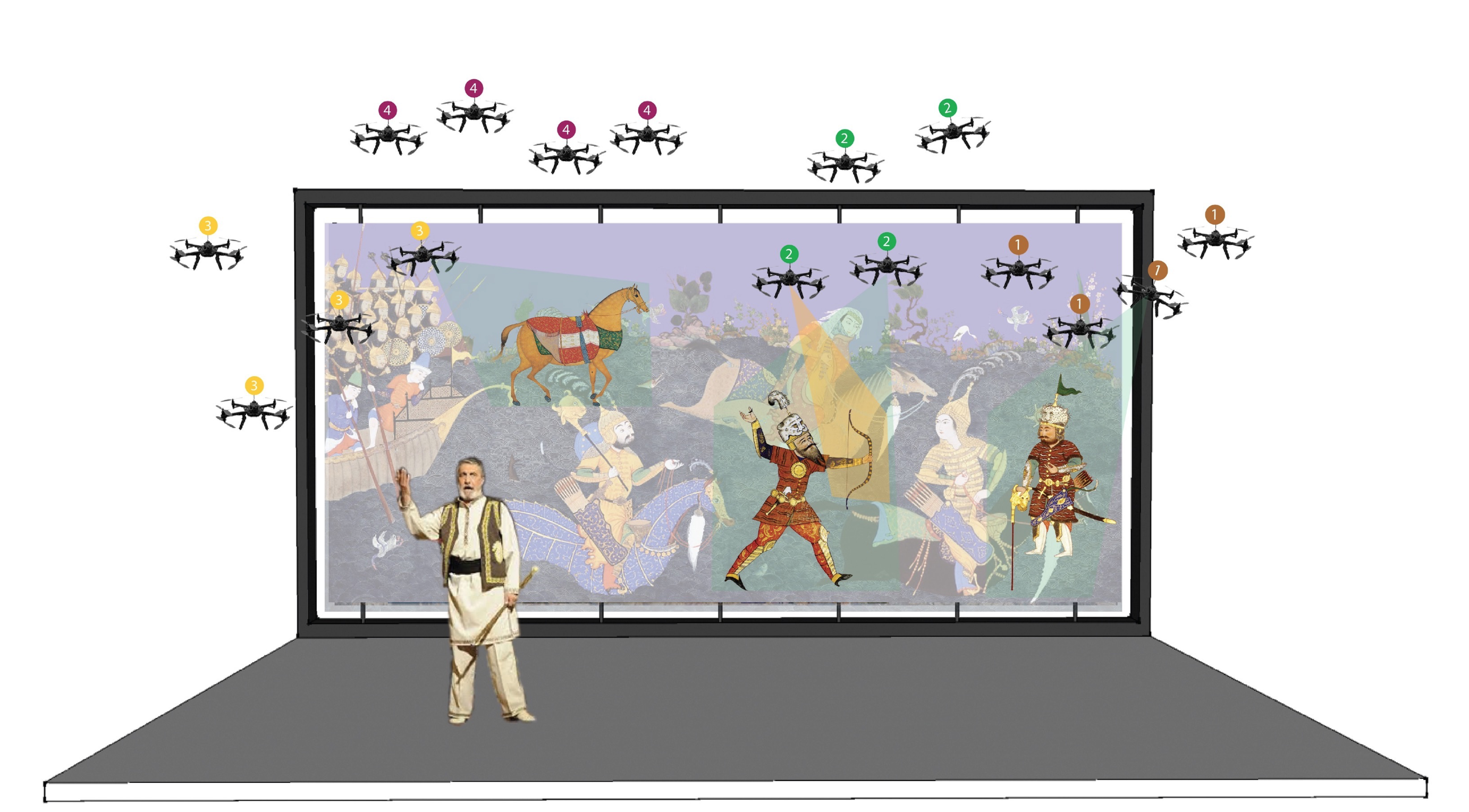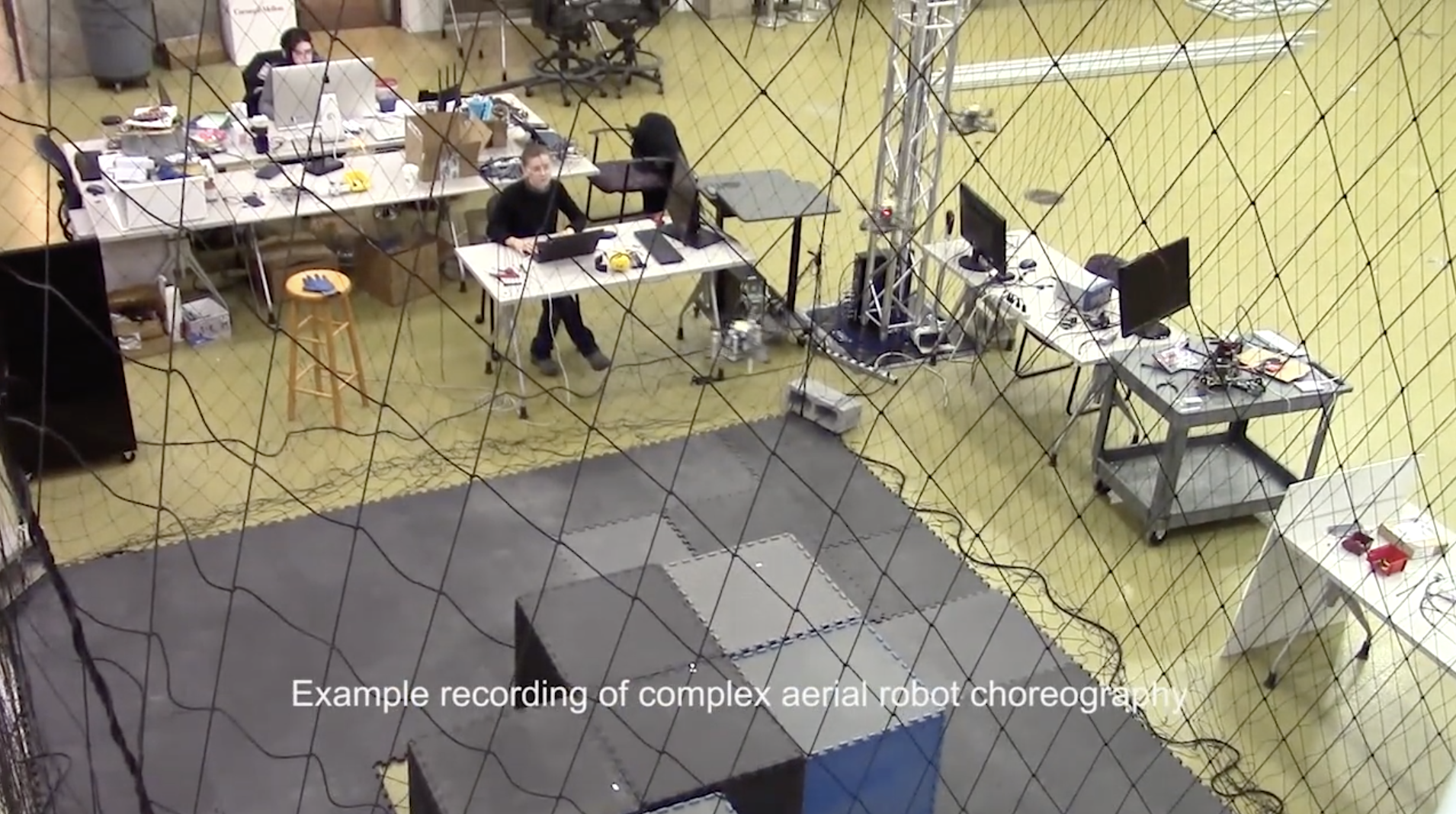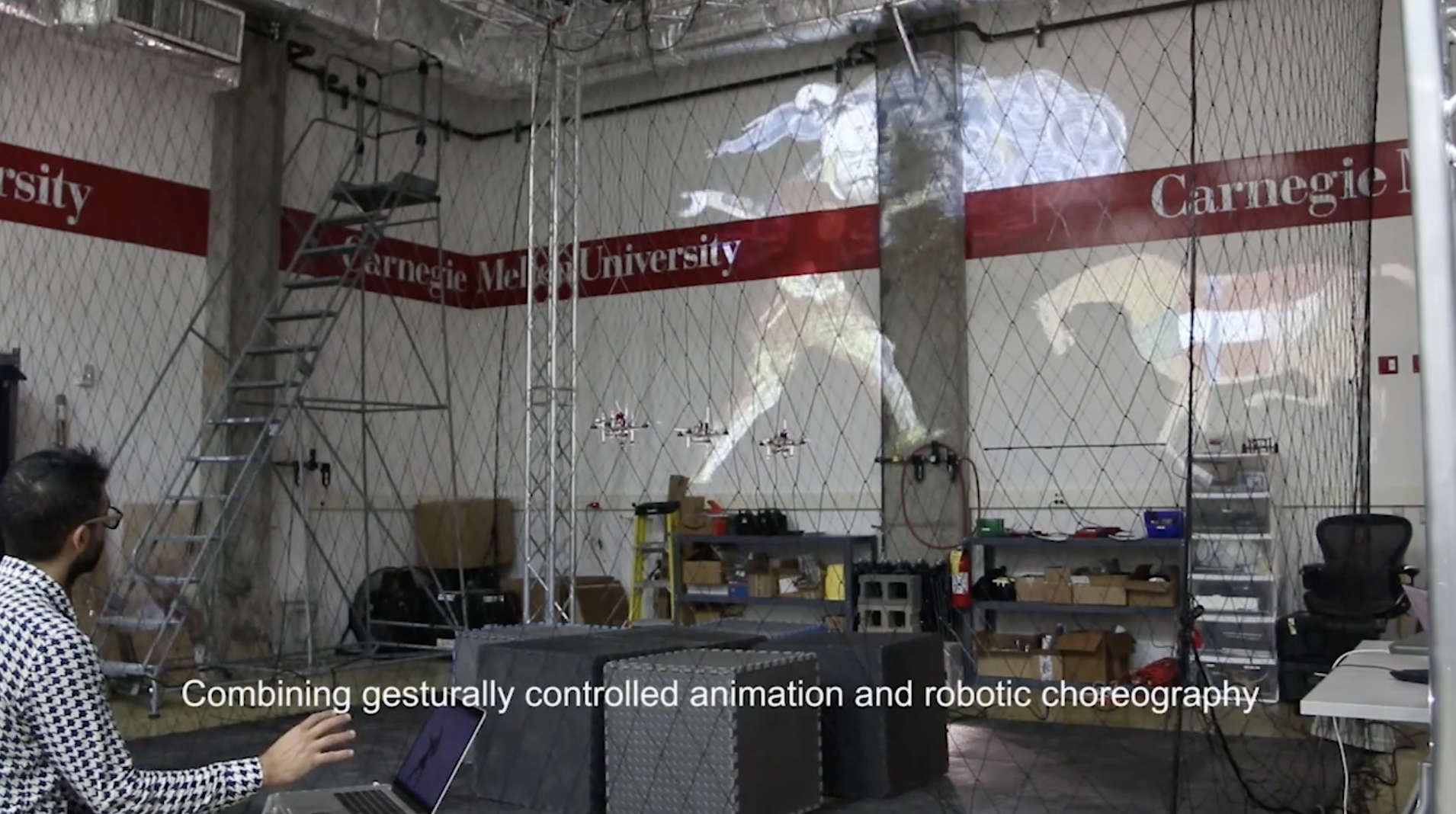Shah-nameh Remix
Ali Momeni (2016)This project departs from a thousand year old epic poem by the Persian poet Ferdowsi called the Shahnameh (i.e. The Book of Kings); 60,000 lines of verse that embody the pre-Islamic culture and history of Iran better than any other single source, by creating the most comprehensive collection of Iranian mythology from over 2000 years of history, and rigorously setting it in a highly literary and referential Farsi language. The project’s goal was to bring the ageless quality of this text and its insightful analysis of Iranian culture and politics into contemporary light. This iteration questions, critiques, and complicates the wide range of presumptions that color civic and political relationships between Iran and the US.
Shahnameh Remix by Ali Momeni :: Supported by FRFAF (#2016-05) from STUDIO for Creative Inquiry on Vimeo.
In this project, gesture is transformed, multiplied, and scaled to create an immersive storytelling experience. The layers of gesture include movements by the lead performers, complementary gestures expressed in the live animation and the large scale coordinated aerial robotic choreography. The human, robotic and media elements in this work together as an orchestra of gestures: the audience will experience a virtuosic dancer whose body movements and hand gestures are intimately tied to the animation in the large panoramic projected image and a squadron of flying robots. We intend to develop this work closely with a dancer practiced in a theatrical and physically rigorous movement style. The movement concept is inspired by the tradition of Naqqali, a dramatic storytelling practice that dates to the 7th century CE where the morshed–generally a male master storyteller–strolls in front of a mural and recites tales of legends while pointing to specific elements in the image. We have developed a system that allows a performer to use bi-manual gestures (freehand on the right, and a wand in the left hand) to communicate with the robotic and animation system using a customizable grammatical gestural language.
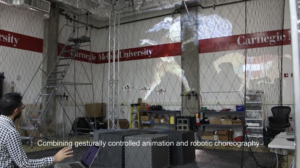
Our engagement with Shahnameh focuses particularly on the battle between Rostam and Esfandiar, featuring the epic’s hero and his princely disciple. This story is characterized by the intricacies of political ambition and familial allegiance that surround an empire in transition. This story also contains numerous mythological archetypes shared across canonical texts from the east and the west such as the firebird and the invincible warrior with a one weakness. These references serve as cross-cultural symbols that connect one story to mythological structures and their audiences from around the world.
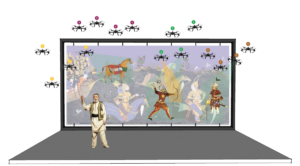
The past decades have brought tremendous media attention to Iran; its internal politics, its influence on regional and global politics; the Iranian Revolution of 1979, the hostage crisis shortly thereafter, the brutal 10-year war between Iran and Iraq in which the US aided both sides to demolishing one-another, the Iran–Contra affair, the rise and fall of Iranian presidents (across the political spectrum from Khatami-to-Ahmadinejad), the polemic nuclear peace accord presented by the U.S. Obama administration. Each event has exponentially polarized attitudes towards Iran and its people. Experiencing the Shah-nameh today is a cultural and political experience, rooted in a centuries old tradition of translation and preservation, of a culture–Iranian–that is connected yet separate from much of the surrounding context of the Arab muslim world.
This project was supported by Grant #2016-05 from the Frank-Ratchye Fund for Art @ the Frontier.
Crew
Ali Momeni – Principal Investigator
Anthony Tomasic + Nathan Michael – Co-investigators
Ellen Cappo – PhD Candidate
Nima Dehghani – Masters in Fine Art Candidate
Shawn Zu – Masters in Computational Data Science Candidate and Summer Research Assistant
Heran Li + Tyrone Zhang – asters in Computational Data Science Candidates
Lorraine Shim – Masters in Design Candidate
